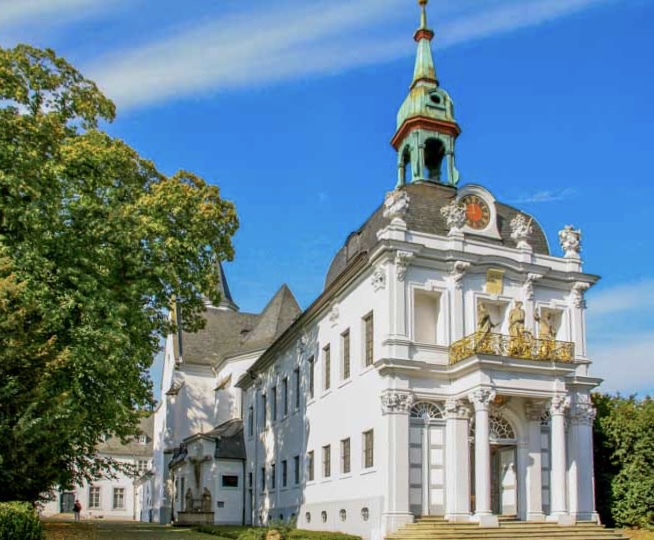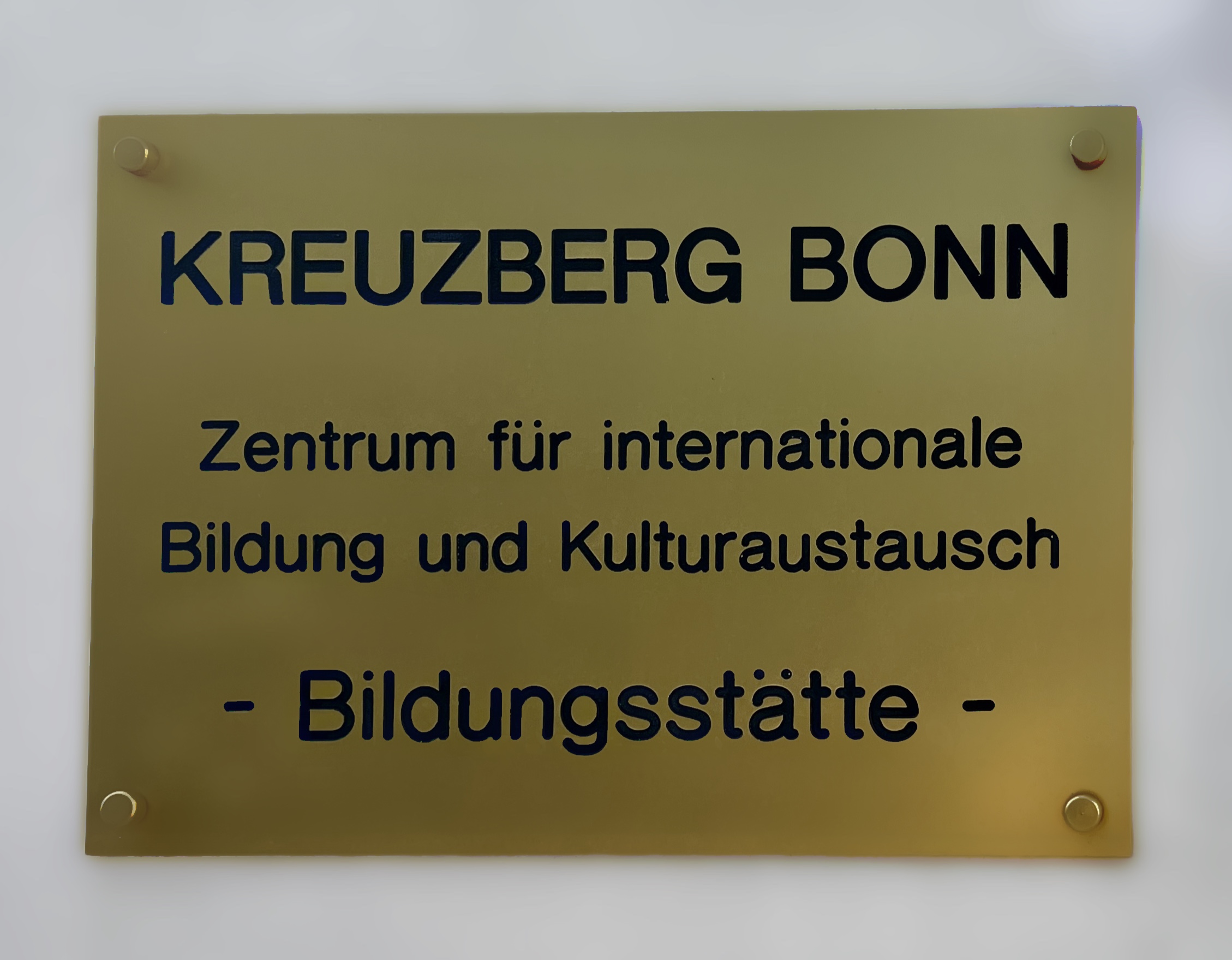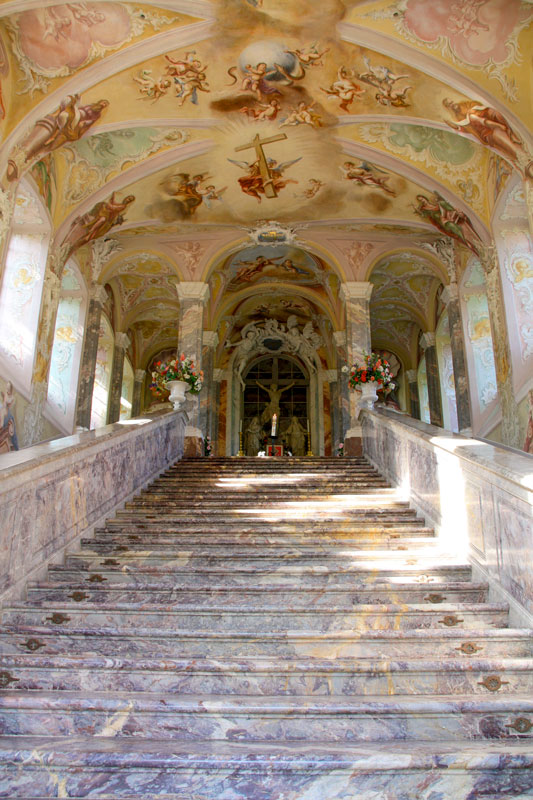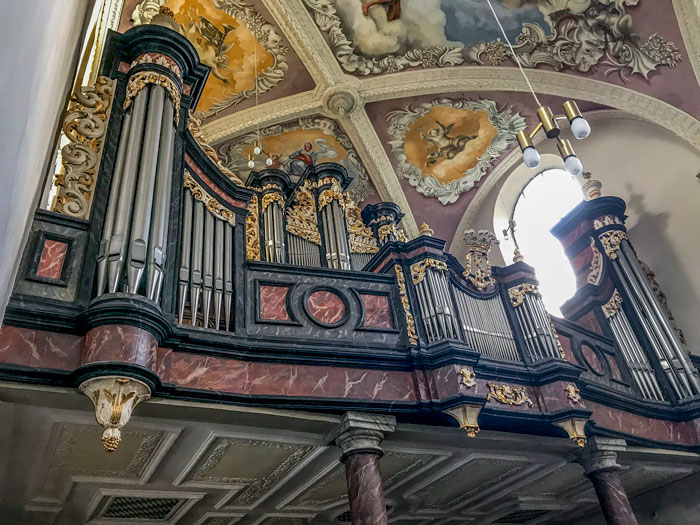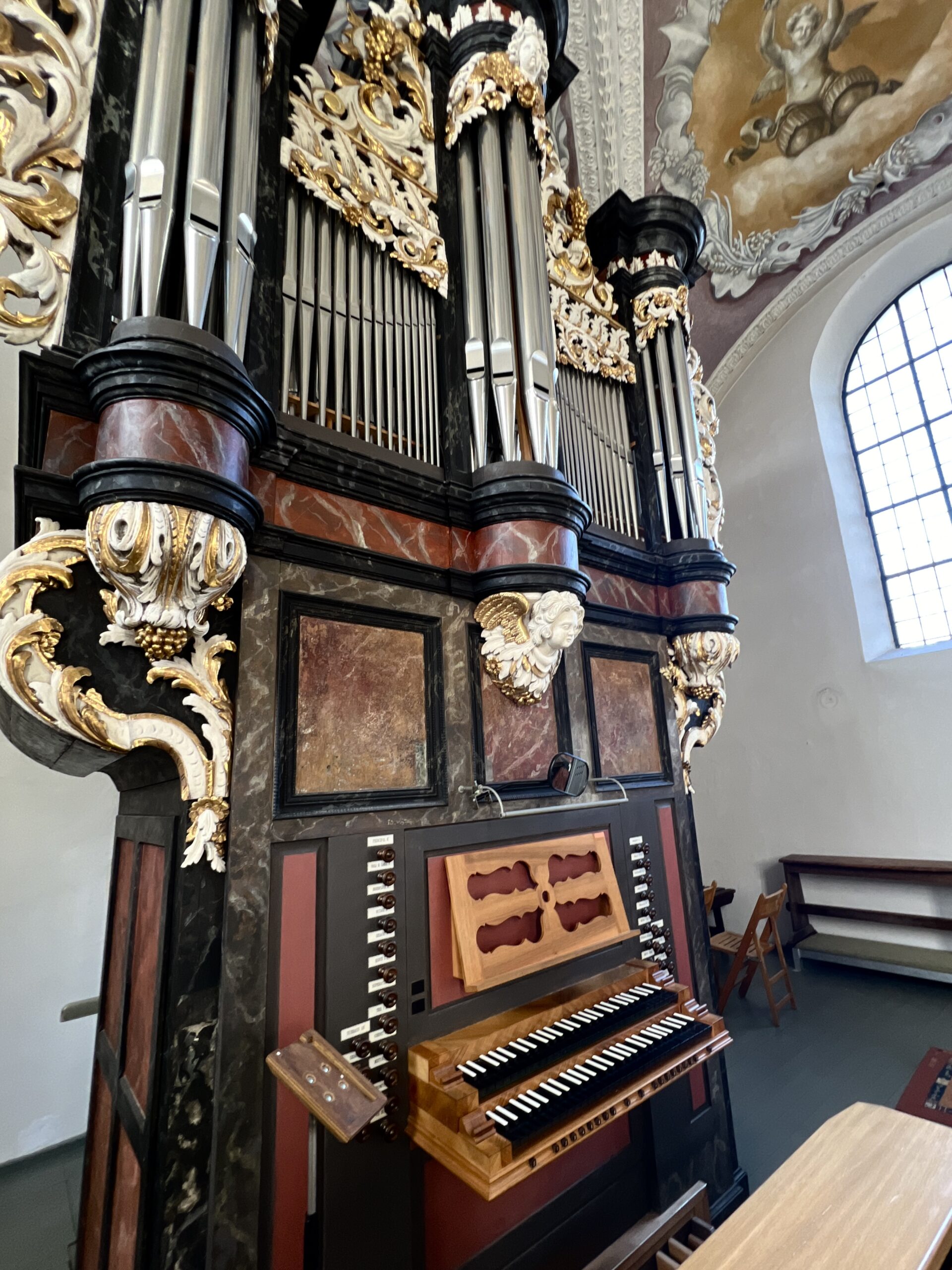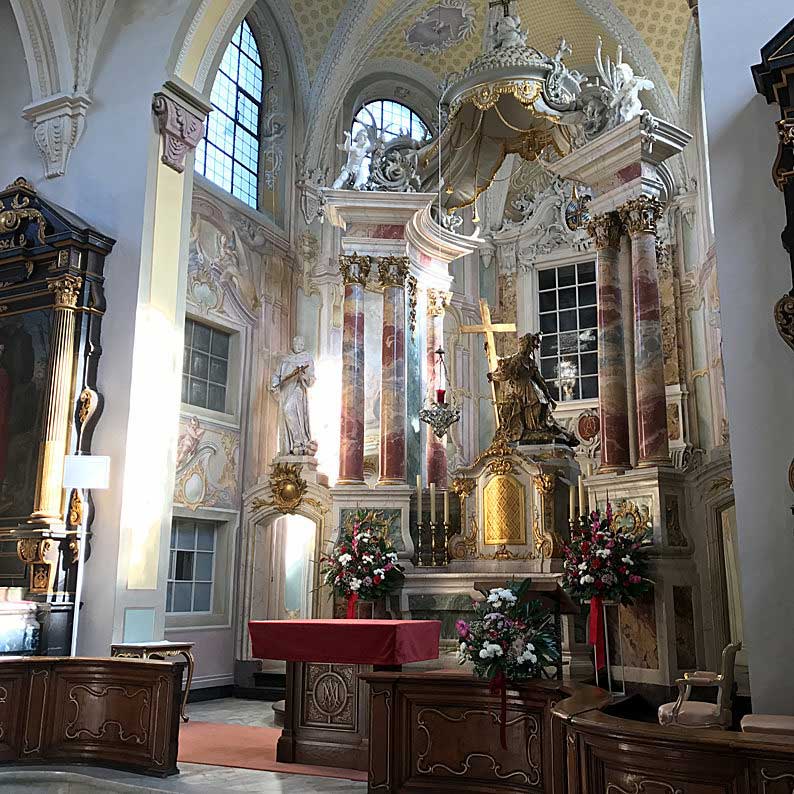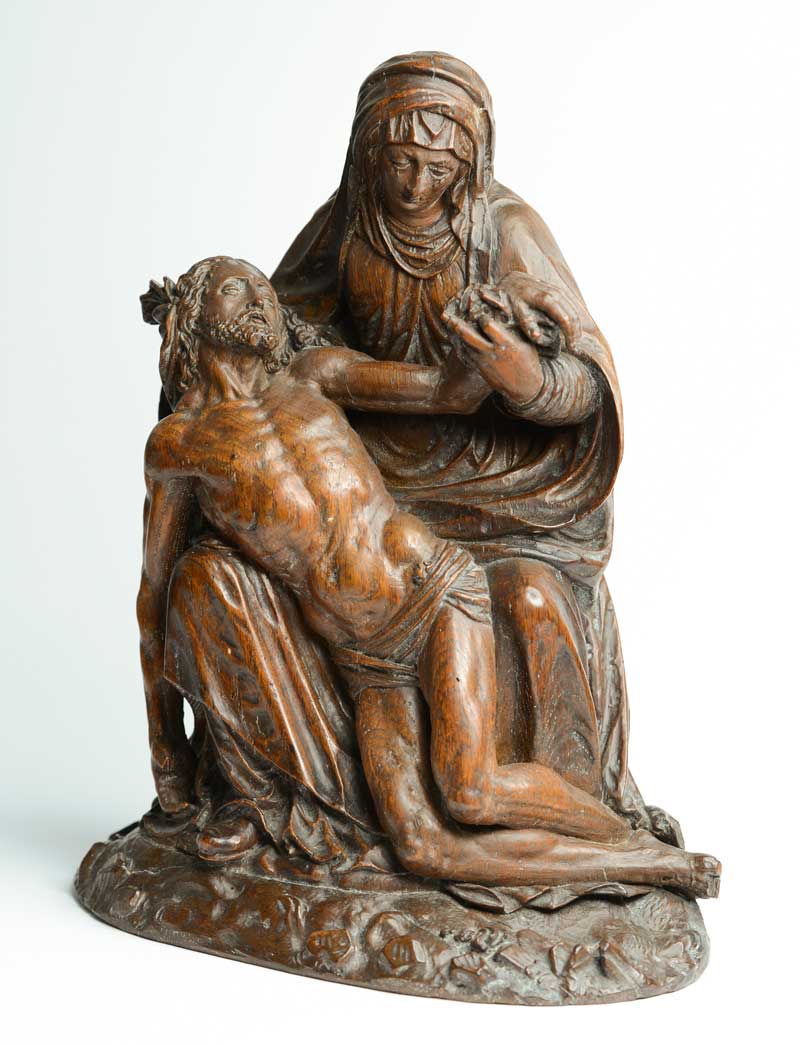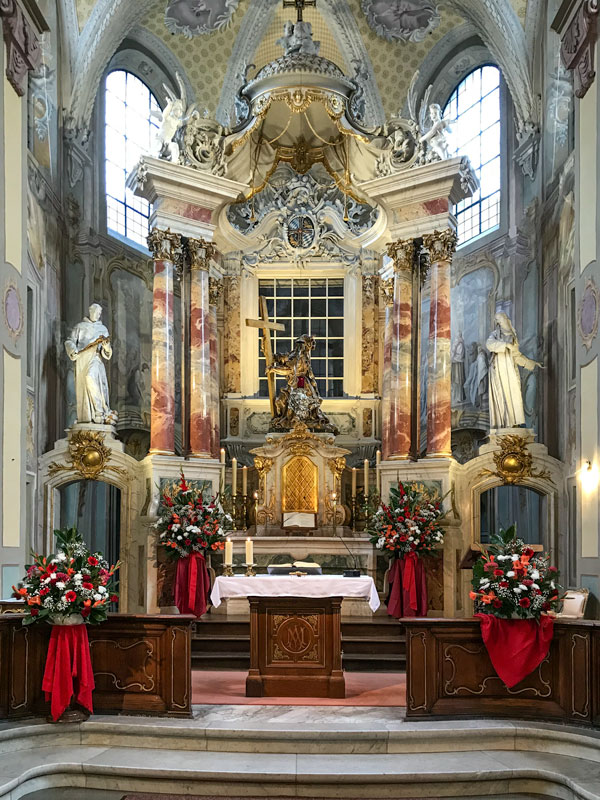Popular destination
Kreuzberg BonnA place of meditation and religious inspiration
News
Easter services 2025
Palm Sunday, 13.04.: 7:30 a.m. Eucharist, 11:15 a.m. festive service – beginning in front of the Holy Staircase.
Monday-Tuesday, April 14/15: 06:30 a.m. Eucharistic celebration.
Wednesday, 16.04.: 19:30 Eucharist.
Maundy Thursday, 17.04.: 19:00 Eucharistic celebration.
Good Friday, 18.04.: 15:00 Karliturgie.
Confession: 10:00-12:00 and 16:45-17:30.
Holy staircase open: 08:00-18:00.
Holy Saturday: Holy Staircase open from 08:00-18:00.
Easter Vigil, April 19: 9:00 p.m. Easter celebration – beginning in front of the Schoenstatt Chapel.
Easter Sunday, 20.04.: 7:30 a.m. and 11:15 a.m. High Mass.
Easter Monday, April 21: 7:30 a.m. and 11:15 a.m. Holy Mass.
Tuesday: 06:30.
Wednesday: 19:30.
Thursday-Friday: 06:30.
Saturday: 07:30.
Sunday: 07:30 and 11:15.
Your Kreuzberg Team
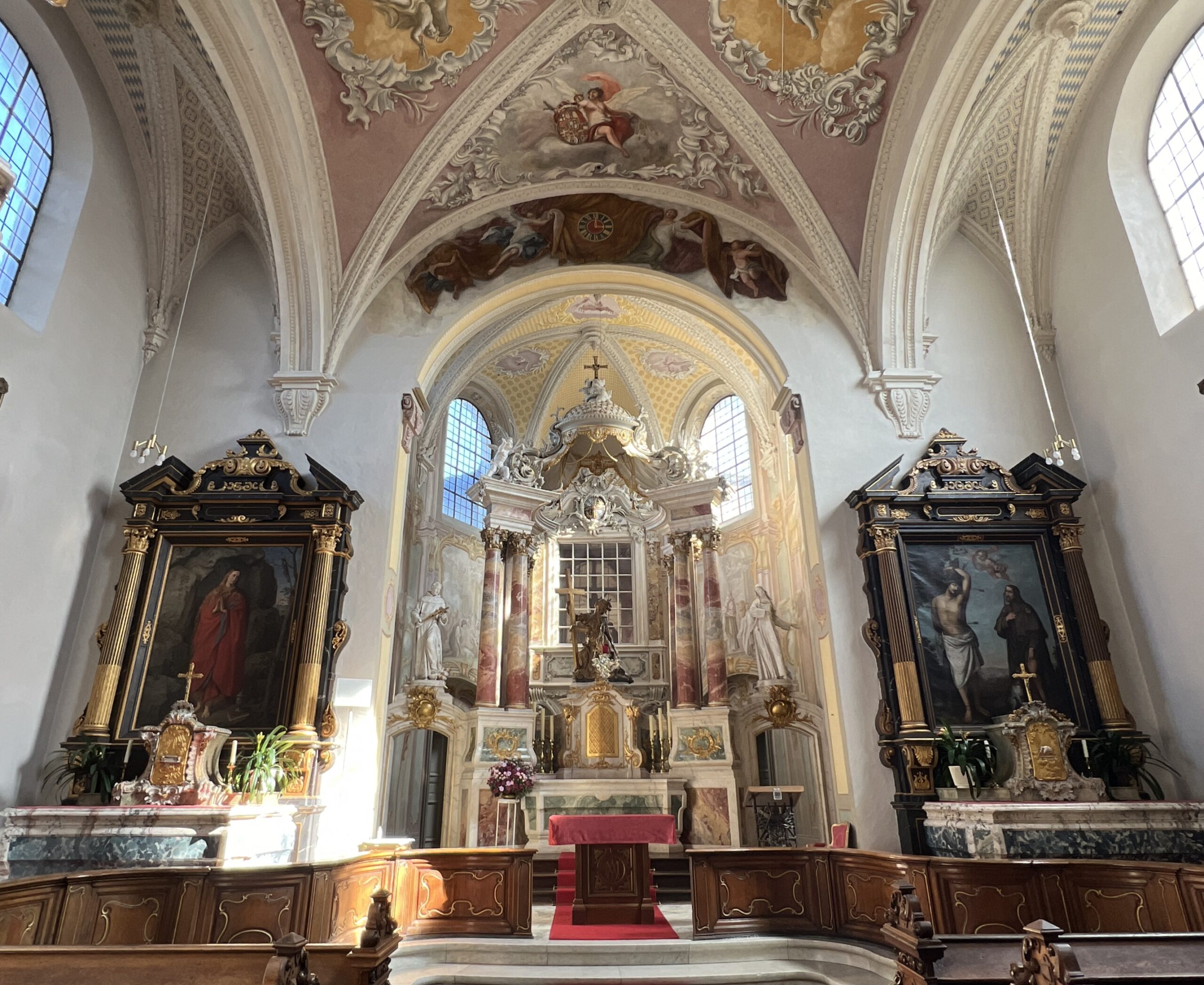
Kreuzberg Bonn
Culture – Education – Religious Inspiration
Jewel of the Federal City of Bonn
The Kreuzberg-Bonn is located on a hill, near the center of the federal city. The baroque Kreuzberg Church with its replica of the “Holy Staircase” by Balthasar Neumann, the International House of Studies, and the baroque Schoenstatt Shrine characterize Kreuzberg. Located in the middle of a park and with a magnificent view of the city of Bonn, it is a popular destination for excursions and a place of meditation and religious inspiration.
Place of cultural events
Several times a year, excellent concerts draw people to the Kreuzberg Church.
Your concert? Concert information
International Education Center
Next to the historical buildings is the “Center for International Education and Cultural Exchange”. It is recognized as a residential adult education center and is funded by the state of North Rhine-Westphalia. The education sector focuses its activities on intensive German courses (see
Language Institute
) with integrated cultural and political education. In our own
study house
the students form a study community. Against the background of a Christian self-image, the Heimvolkshochschule places special emphasis on intensive counseling for people of all races and religions.
MORE INFORMATION ↓
Holy staircase
History of the Holy Staircase
History of the Holy Staircase
In 1746, the Archbishop and Elector of Cologne, Clemens August, commissioned the master builder Balthasar Neumann to build the Holy Staircase, which was completed and consecrated as early as 1751. In this context, the Kreuzberg Church also received its present precious baroque decoration.
The Holy Staircase on the Hill of Crosses is a replica of the “Scala Santa” in Rome, the staircase supposedly from Pilate’s palace that Jesus had to climb before his condemnation. On Good Friday and Holy Saturday, pilgrims climb the total of 28 steps on their knees until they reach the altar with Jesus as the Savior on the cross. – Through the window behind, they look at the ceiling painting depicting the Resurrection.
On the balcony of the facade, life-size figures recreate the scene in which Pilate presents Christ to the people for condemnation.
Holy staircase
The Holy Staircase on the Hill of Crosses is a replica of the “Scala Santa” in Rome.
Schoenstatt Shrine
The idea
The idea
After the departure of the Franciscans in 1968, the then Auxiliary Bishop Heinrich Tenhumberg endeavored to secure the Kreuzberg in Bonn as a spiritual place and to make it accessible to the Schoenstatt Movement for this purpose.
The proximity to the city of Bonn – at that time the capital of the Federal Republic of Germany – suggested the thought: Couldn’t a Christian educational institution be built on the Kreuzberg, which would contribute to the unity of different cultures and help to realize the mission of the Church for the world in the sense of Vatican Council II?
In a conversation with Auxiliary Bishop Heinrich Tenhumberg on September 14, 1968, the founder of the International Schoenstatt Movement, Fr. Joseph Kentenich, confirmed this concern.
There is talk of building a “shrine” there like the one at Schoenstatt’s place of origin, and the phrase “diplomatic shrine” is coined.
The Schoenstatt Shrine
The “Schoenstatt Shrines” are Marian places of covenant between man and God. People make a covenant with Mary in these places in order to bear witness to Christ with her help and by her hand in their professional, social and family commitments.
This chapel thus becomes a “covenant chapel”.
The organ
Concert organ from the Klais company
Concert organ from the Klais company
It has a historical case of unexplained origin. In 1902, this case contained a Klais organ with pneumatic (!) action. In 1969/70, the Klais company provided the organ with a new pipework, a new playing system and a mechanical action.
In the course of the entire renovation of the Kreuzbergkirche 1992-1998, the pipework was removed from the case and the latter was encased in a protective foil, until finally in 1998 the installation of a completely new playing system, a modern setter combination apparatus and partially new pipework took place.
The organ has 26 sounding stops, distributed on 2 manuals and pedal with mechanical playing and electric stop action.
The instrument is perfectly suited to the church space, both tonally and structurally, and the stops can be mixed among a wide range of possibilities, contributing to a rich variety of colors. The organ is perfectly suitable as a solo and also as an accompanying instrument.
Disposition
Oberwerk
Principal 8′, viola da gamba 8, reed flute 8′, octave 4′ (facade), Gedackt 4′, fifth 2 2/3′, superoctave 2′, third 1 3/5′, cornet 3f, mixtur 4f, trumpet 8′, voxhumana 8′
Rückpositiv
Gedackt 8′ Bass, Gedackt 8′ Treble, Flaut travers 8′ Treble, Rohrflöte 4′, Principal 2′ (Prospekt), Sifflöte 1 1/3′, Tintinabulum 2f (1 3/5′ + 1′), Mixtur 3f, Dulcian 8′, Tremulant
Pedal
Subbass 16′, Principal 8′ (facade), Gedackt 8′, Octave 4′, Trombone 16′, Trumpet 8′
Coupling
RP/OW, OW/Ped, RP/Ped; 3072 setter combinations distributed over 48 “pallets” of 64 combinations each 1A-8H, manuals: black lower and white upper keys; parallel pedal keys
The story
History of the Kreuzberg Church
History of the Kreuzberg Church
1429 - 50,000 people gathered at the Kreuzberg
End of the 14. and at the beginning of the In the 15th century, a devotion to the cross and the redemptive suffering of Christ and the compassion of his mother Mary, the so-called Seven Sorrows of Mary, i.e. a special devotion to Christ and Mary, was alive in the immediate region of the Kreuzberg in Bonn.
It is mentioned in a document that on the feast of St. Anthony of Padua (June 13) in 1429, 50,000 people gathered at the “Holy Cross” on the Kreuzberg in Bonn above Lengsdorf to venerate the cross.
1550 (ca.) First chapel next to the cross
Because of the many pilgrims, a chapel was built next to the cross a few years later in the second half of the 16th century from pious donations of the people and probably also from endowment funds of wealthy citizens of Bonn, about 50 m from the beginning of today’s Stationsweg in the direction of the Kreuzberg church and 50 m to the left into the terrain. Due to the confessional conflicts of the Reformation and its consequences, the turmoil of the 30 Years War (1618-1648) as well as the effects of the weather, this chapel fell into disrepair.
1627 the present Kreuzberg church is built
Elector Ferdinand of Cologne, at the insistence of the population and in view of the hardships (plague and turmoil of war), following the long tradition of the veneration of the cross and his own religious impulse, had the present Kreuzberg church built in 1627 “in a more beautiful place” on the Kreuzberg as a simple plastered brick building. It could be consecrated as early as 1628.
On this occasion, Elector Ferdinand gave the church, which was the main church of the Bonn Brotherhood of the Seven Sorrows of Mary, the miraculous image of the Sorrowful Mother (Pieta), which he had made from the “miraculous” wood of the oak tree of Foy-Notre-Dame near Dinant in the diocese of Liège.
It is of great artistic and historical value; its significance for the history of faith and piety as well as for the development of a lively church community in the region and the pilgrimages to the Kreuzberg is inestimable and continues to this day.
1633 Seven pains brotherhood founded
The Kreuzberg church possesses a relic of the cross of Christ, which was documented as “genuine” in 1734; according to other sources, it was also donated to the church on the Kreuzberg by Elector Ferdinand of Cologne.
The Brotherhood of the Seven Sorrows of the Mother of God or the “Seven Sorrows Brotherhood” consisted in its core of Bonn citizens, lay people, who felt a special commitment to the Kreuzberg in Bonn, its religious life and the spreading of the veneration of the cross as well as Marian devotion. It received its official establishment document from the Elector Ferdinand of Cologne in 1633, which was both a confirmation and a spiritual re-foundation. This greatly intensified the spread of the fraternity in the archdiocese and the pilgrimages to Mount Cross.
1637 Monastery for the Servite monks
10 years after the construction of the Kreuzberg Church, Elector Ferdinand of Cologne had the small monastery for the Servite monks built on the tower side of the church. The Servites, a mendicant order from Italy with a German-speaking branch in Innsbruck, took over the monastery and the service to pilgrims in 1637.
1751 The Holy Staircase
More than 100 years later (1746), the Archbishop and Elector of Cologne, Clemens August, commissioned the master builder Balthasar Neumann to build the Holy Staircase, which was completed and consecrated as early as 1751. In this context, the Kreuzberg Church also received its present precious baroque furnishings.
1809 Monastery, church and Holy Staircase almost lost
In the course of the secularization of 1802, the state-ordered expropriation and dissolution of the monastery, the Servites had to leave Kreuzberg. The monastery was unfunctionalized into a restaurant. The last prior of the Servites, Father Heinrich Siebertz, became parish priest in Sankt Peter, Lengsdorf and from 1804 onwards occasionally looked after the Kreuzberg. After the fire of the church tower, in 1809, the property was sold on demolition. Only the determined and tenacious efforts of the Bonn court councillor Caspar Oppenhoff saved the monastery, church and Holy Staircase from demolition.
1815-1855 Temporary solutions
From 1815 until his death in 1828, the parish priest emeritus of Walberberg, Father Adolf Küpper, lived on Kreuzberg, where he celebrated daily Holy Mass. celebrated the Eucharist, heard confessions and administered the Sacrament of Reconciliation.
From 1828 to 1855, Bonn clergymen celebrated Holy Mass on Sundays and holidays on a temporary basis. Mass on the Kreuzberg, among them, from 1842 to 1850, the house chaplain of the Freifrau von Romberg, then owner of the Kreuzberg estate.
1855 Jesuits and 1889-1968 Franciscans
In 1855, the Jesuits leased the entire estate. Under their efforts, the old Kreuzberg piety revived. In 1858 the “Seven Footfalls” were created on the way to Bonn-Endenich and from 1861 to 1865 the 14 stations of the Way of the Cross around the large garden (today a park). In 1872 the Jesuits had to leave Kreuzberg as a result of the Kulturkampf. During this turbulent time, from around 1874 to 1889, the Franciscan fathers from Remagen helped to ensure that the Kreuzberg was preserved and kept alive, or “did not come under the wheels”.
From 1889 to December 31, 1968, Franciscan monks performed the same service on the Kreuzberg as the Servite monks once did.
1980 Schoenstatt Institute Brothers of Mary
At the instigation of Bishop Heinrich Tenhumberg, Bishop of Münster, in conjunction with the international Schoenstatt Movement, the property was purchased by the Ludgerusgemeinschaft e.V. in 1970. In 1980, ownership and sponsorship were transferred to Kreuzberg-Bonn e.V. The Schoenstatt Institute of the Brothers of Mary took over the management.
Together with the community of the Sisters of Charity and the surrounding parishes, the Schoenstatt Institute of the Brothers of Mary strives to revive and continue the valuable Kreuzberg pilgrimage shrine tradition and to make the House of Studies effective as a center for international education and cultural exchange and home adult education center in the service of an international Christian social order and the worldwide Church. – The church, Holy Staircase and the ancient part of the monastery are owned by the state of North Rhine-Westphalia as patronage buildings.
The rector of the pilgrimage church Kreuzberg Bonn is appointed by the archbishop of Cologne.
Piéta
Numerous people come every week to light a candle at the Piéta – as a symbol of worries, concerns and thanks.
Dare
in the Kreuzberg Church
Marriage in the Kreuzberg Church
The beautiful Kreuzberg Church is basically available for wedding ceremonies and anniversary services. We look forward to seeing you.
Please download the relevant information sheet and find out which days are available.
Please contact us in good time: 0228/2899920 or kirche(ät)kreuzberg-bonn.de.
The Kreuzbergkirche is not available for baptisms. Please contact your local parish office for this.
Your Kreuzberg Team
Downloads
Information about getting married on the Kreuzberg-Bonn.
Marriage on the Kreuzberg.pdf
(2.8 MB)
Church services
Public masses in the Kreuzberg Church
Easter 2025
Easter services 2025
Palm Sunday, 13.04.: 7:30 a.m. Eucharist, 11:15 a.m. festive service – beginning in front of the Holy Staircase.
Monday-Tuesday, April 14/15: 06:30 a.m. Eucharistic celebration.
Wednesday, 16.04.: 19:30 Eucharist.
Maundy Thursday, 17.04.: 19:00 Eucharistic celebration.
Good Friday, 18.04.: 15:00 Karliturgie.
Confession: 10:00-12:00 and 16:45-17:30.
Holy staircase open: 08:00-18:00.
Holy Saturday: Holy Staircase open from 08:00-18:00.
Easter Vigil, April 19: 9:00 p.m. Easter celebration – beginning in front of the Schoenstatt Chapel.
Easter Sunday, 20.04.: 7:30 a.m. and 11:15 a.m. High Mass.
Easter Monday, April 21: 7:30 a.m. and 11:15 a.m. Holy Mass.
Tuesday: 06:30.
Wednesday: 19:30.
Thursday-Friday: 06:30.
Saturday: 07:30.
Sunday: 07:30 and 11:15.
Opening hours
Church of the Cross – Holy Stairs – Schoenstatt Shrine
Kreuzberg Church / Holy Staircase
Open: summer time 9 am – 6 pm, winter time 9 am – 5 pm
Holy Staircase: The main gate is open like the church. The Holy Staircase is accessible on Good Fridays and Holy Saturday mornings, as well as around September 14, the Feast of the Exaltation of the Holy Cross;
outside of these times during special guided tours.
Schoenstatt Shrine
Open: daily from 8 a.m. to 6 p.m.; winter time 8 a.m. to 5 p.m.
Tuesdays: 15.00-16.00 h Prayer hour for current concerns
All days except Wednesdays: 19.30 h Rosary.
Info
Kreuzberg and surroundings
The city
City of Bonn – www.bonn.de
The region
Bonn Regio – www.bonn-region.de
By bike
By bike – Rad-Region-Rheinland
Baroque
Culture – Baroque in and around Bonn
Do you have any questions?
Contact & Directions
Bus & Train | Taxi & Car
Kreuzberg Bonn
Stationsweg 21
D – 53127 Bonn (Germany)
Phone – +49 (0)228 / 28 999-0
Fax – +49 (0)228 / 28 999-49
info@kreuzberg-bonn.de
https://www.kreuzberg-bonn.de
Account details – Donations
Kreuzberg-Bonn e.V.
IBAN: DE77370601930000012025
Text: “Kirche” or “Studienhaus”
Directions
By train: From Bonn main station: Bus route 602 (direction “Waldau”) or 603 (direction “Röttgen”) to the “Kreuzberg” stop, then along the station path to the Kreuzbergkirche.
By cab: enter “Ippendorf-Kreuzbergkirche”
For bus drivers a hint:
If you are coming from the west via the A 565: Exit Hardtberg/Röttgen, then always in the direction of Röttgen, at the entrance to Röttgen turn left at the traffic circle in the direction of Ippendorf – your navigation system will tell you the rest.
If you are coming from the east via the A 565: Exit Lengsdorf (not Endenich, not Poppelsdorf), direction Lengsdorf/Röttgen, stay on the road until you enter Röttgen, at the traffic circle turn left towards Ippendorf – your navigation system will tell you the rest again.

